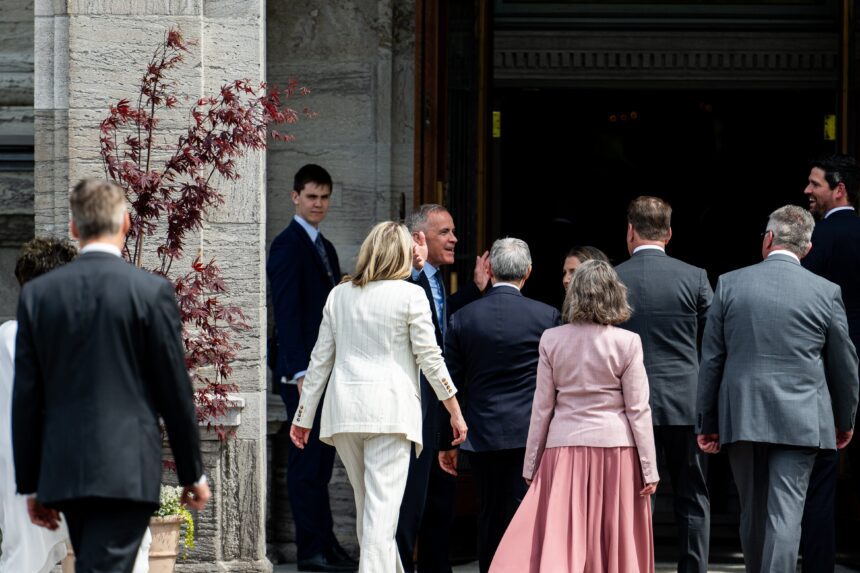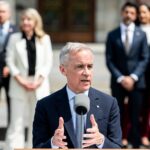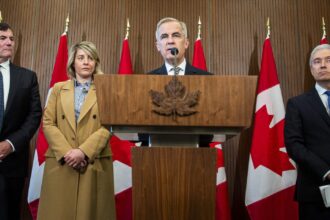In a decisive break from previous administrations, Finance Minister Mark Carney unveiled a comprehensive climate policy framework yesterday that experts are calling the most significant pivot in Canada’s environmental strategy in decades. Speaking from Parliament Hill in Ottawa, Carney laid out ambitious new targets that will fundamentally reshape the relationship between government, industry, and Canada’s climate obligations.
“The era of treating climate action as optional or secondary to economic growth is over,” Carney declared to a packed press gallery. “Our government recognizes that environmental sustainability and economic prosperity are not competing priorities but mutually reinforcing necessities.”
The newly announced framework introduces carbon pricing mechanisms that will increase incrementally over the next five years, reaching $170 per tonne by 2030—nearly triple the previous government’s projections. This represents the most aggressive carbon pricing schedule among G7 nations and signals Canada’s intention to position itself as a global climate leader.
Industry reaction has been notably mixed. The Canadian Association of Petroleum Producers expressed “significant concerns” about implementation timelines, while clean technology firms saw their stock values surge on the Toronto Stock Exchange following the announcement. Particularly notable was the 17% single-day increase for Canadian renewable energy companies.
“This policy shift creates predictability for businesses and investors,” noted Dr. Sarah Richardson, environmental economist at the University of Toronto. “The clarity of the carbon pricing schedule allows companies to plan long-term investments with confidence, which has been sorely lacking in previous climate approaches.”
Central to the Carney plan is a $35 billion green infrastructure fund that will prioritize projects in communities historically dependent on fossil fuel extraction. The “Just Transition” component of the framework allocates specific funding for worker retraining programs, particularly in Alberta, Saskatchewan, and Newfoundland and Labrador.
Indigenous leaders have cautiously welcomed the announcements, particularly provisions requiring meaningful consultation on climate adaptation projects in northern communities. Grand Chief Wilton Littlechild called the framework “a step toward recognizing Indigenous knowledge in climate solutions,” though emphasized that “implementation will be the true measure of the government’s commitment.”
Environmental advocacy groups, long critical of Canada’s climate performance, have largely praised the directional shift while noting that even these accelerated measures may not be sufficient to meet Canada’s Paris Agreement obligations. The framework projects a 45% emissions reduction below 2005 levels by 2030, slightly exceeding Canada’s international commitment of 40-45%.
Provincial reactions have followed predictable political lines. Quebec Premier François Legault welcomed the alignment with his province’s existing climate programs, while Alberta Premier Danielle Smith warned of potential constitutional challenges to federal carbon pricing mandates that affect provincial resource jurisdiction.
The business community appears divided along sectoral lines. The Business Council of Canada acknowledged the necessity of climate action but expressed concerns about international competitiveness, particularly with the United States, where climate policy remains politically contentious.
“Canadian companies will be making investments their American counterparts aren’t required to make,” said council president Goldy Hyder. “Border carbon adjustments will be essential to prevent carbon leakage and protect Canadian jobs.”
Minister Carney’s background as former Bank of Canada and Bank of England governor appears to have influenced the framework’s focus on climate risk disclosure requirements for financial institutions and publicly traded companies. These new reporting standards will align Canada with emerging global practices and prepare the financial sector for climate-related economic disruptions.
As debate continues about implementation details, one thing is increasingly clear: Canada’s approach to climate policy has entered a new phase of ambition and urgency. The question now facing Canadians is whether this significant policy realignment has come in time to meaningfully address our climate challenges, or














